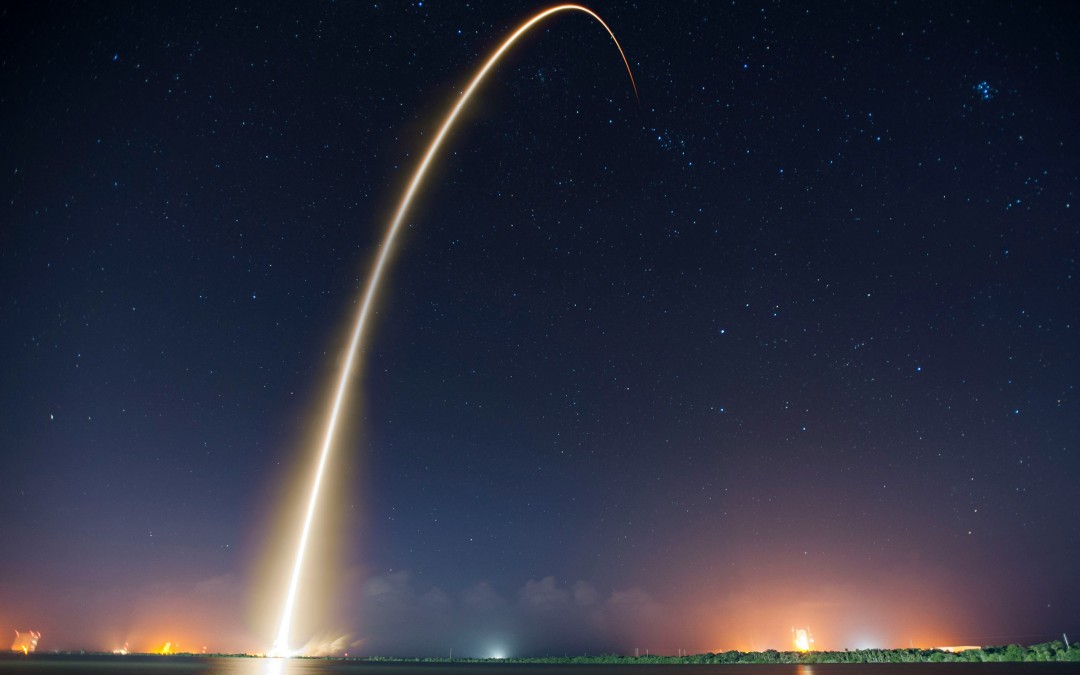I don’t know that I’ve ever seen a happier-looking workforce than the SpaceX people. On launch days, which I rarely miss, technical tension seems underlaid with memories of how badly it can go, but the strain turns into wild enthusiasm when the workers pile into a big windowed conference room, and the cameras begin to pan over their faces. They lean back and look up together at monitors showing the results of their no-doubt-difficult work and their hopefully-deep belief in the project of lifting humanity off the face of our tiring planet. They are halo-ed in aspiration and hope as the clock ticks down. They cheer.
Launch days offer plenty to watch and millions of fellow enthusiasts. Some flights feature a fast-scrolling greeting thread running down the side of the screen, where one can log in to say where you are. I managed to insert Saint Paul, just between someone from Saudi Arabia and someone from Kenya. It’s a worldwide event, broadcast in many languages.
On the Starship Test Flight 3 recently, I ran across a Spanish language site that was calling out individuals from what sounded like all over Mexico. Being a provincial American who mostly speaks English, I only caught every tenth word or so, but I do understand “Salud!” and “Ola!” and “Buenos dias!” I heard many versions of “Hello to Monterey”, “Hello to Cancun”, and even a “Hello to Pablo watching in his house with his family”. The bright-voiced announcer gave an occasional little laugh as she spoke. The starship was launching in south Texas; probably many of her listeners would be able to see it rise.
The rest of us, attentive to our screens, were sharing the same sense of anticipation and hope, linked momentarily by the unfolding drama, oddly familiar from a lifetime of fiction, and at the same time entirely new and in the present tense. Ten minutes before this last lift-off, one million people were logged on. Three times that many watched the flight, dreaming of the moon and Mars and their childrens’ lives to come. It is good to have company in your dreams.
Another feature: delightful jargon, confidently delivered by a pair of young commentators. “Ascent stage”. “Flip maneuver”. “Water-cooled flame detectors”. “Chopsticks”. “The PEZ dispenser door”, which will eventually disgorge satellites apparently shaped like the classic candy. “Reliable and rapidly re-usable” is a frequent mantra. “Rapid unscheduled disassembly” is also referred to. That means when something blows up.
There are two RUDs on this flight, and the feed discreetly, or perhaps necessarily, goes dark beforehand. But the workers are undeterred, at least with their public faces, and the commenters continue smiling and enthusiastic. Is their language rehearsed? Well, yes, but what did we expect? It seems empirically true that “test flights have goals”, and that the point is to “get as much data as we can toward that glorious rapid reusable future that we want so much.” I buy that. I’m a little less on board for “if you’re not failing, you’re not learning”, but I am not troubled by the overlay of public parlance on the events. They did lose the booster before splashdown. They also flew a starship into space.
This test flight occurred on the 22nd birthday of SpaceX, and at the broadcast close, they briefly showed a founding picture showing maybe ten people in a blank hallway with, for some reason, a mariachi band. It looked like a modest beginning. Yes, Elon Musk was in that photo. I freely admit, and even embrace, my unwillingness to closely consider Mr. Musk. And, well, are those workers really happy? I cannot be sure, and I do not seek the rabbit hole where that answer might exist; that work is for others. But, believing as I do that we are going to have to get off this planet at some point, I applaud the SpaceX assembly of scientists and workers, and recommend tuning in to watch the old science fiction dreams become science fact. Step in to the circle of humanity that is thinking about the stars. Readers, there are cameras on the rockets. I say again: one can see live views of the earth falling away below, and the enormous fire lifting the starship up and away from our planet.
Plus, there is a tab on the spacex.com/launch site called Human Spaceflight. Its subhead is “Making Life Multiplanetary”. And there is a button that says, simply, “Join A Mission”.
Space is the frontier now, and historically, opening new frontiers has never been a simple thing. We would be foolish to think it so. Oh, those shining faces as they watch the rocket rise into the sky. At least somewhere in this world, it’s a great time to be alive.
*****






































